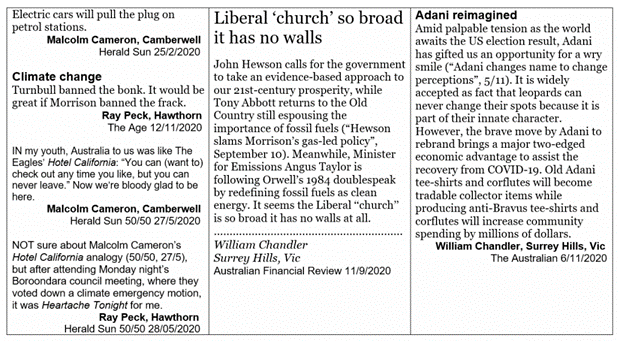Grassroots Lobbying: Writing to your newspaper
Letters to the editor are popular with readers. A well written letter has the potential to change the view of thousands. Politicians take notice of letters and assign daily reading as a task to staff. Some letters may even get “top billing” in a national paper. Here are some tips and tricks to help you get published…
Keep it short + punchy
The editor gets hundreds of letters each day, and they will only give yours about 15 seconds of attention before deciding if it’s publishable. Get to the point quickly. 50 to 150 words is the optimal length.
Make it simple yet creative
Communicate one idea only. The best letters are short, tell personal stories and/or convey a strong emotion. Humour and word-play are great. If you can come up with a catchy, clever title, even better. Write as though you’re addressing the editor — i.e. be polite and use a similar “voice” to your target publication.
Be topical + timely
Tie your letter to a current issue. If responding to an article in today’s paper, submit your letter before midday on the same day. If referring to a previously published article, use brackets and quotation marks to reference it, such as:
DESPITE significant government subsidies, the viability of the Portland aluminium smelter has been questioned for years (“Power share to save smelter”, Editorial, 30/10). Part of the reason…
Make a sandwich
This is a great structure to start with:
A positive first sentence outlining why you’re writing (Top slice of bread).
A sentence or two describing the problem (The filling).
A sentence or two describing the solution (The filling).
A powerful, clever, witty last sentence or question (Bottom slice of bread).
Proof Read
Before sending, don’t rely only on spell checker — read it aloud, give it to a friend to read. Even run it through Scribens or other grammatical tools.
Team up
Receiving several different letters on the same topic on the same day can sway the editor.
Getting your CCL group to work together is a great idea.
How do I submit?
Just put the letter into the body of an email and hit send. But include your name, address and telephone number in case the newspaper will call you to verify or request your approval for an edit. Alternatively complete the newspaper’s online form.
See below for email addresses for newspapers (but always check them on the publication’s website).
Handy Template
To save time and also ensure you don’t forget to include details, use this template.
The Editor
<newspaper name>
<date>
<catchy title of letter — optional>
<text of your letter here>
<your name, suburb, <state if writing interstate>>
<your FULL address>
<your phone number>
Major Newspaper contact details:
The Age: letters@theage.com.au
Sunday Age: sunday@theage.com.au
The Australian: letters@theaustralian.com.au
The Australian Weekday Magazine: magazinefeedback@theaustralian.com.au
The Australian Financial Review: edletters@afr.com.au
The Herald Sun: hsletters@heraldsun.com.au
The Sydney Morning Herald: letters@smh.com.au
The West Australian: letters@wanews.com.au
Canberra Times: letters.editor@canberratimes.com.au
The Saturday Paper: letters@thesaturdaypaper.com.au
Other newspapers (online forms):
For other papers, use your browser to search for “send letter to editor <newspaper name>”
For example, “send letter to editor Bendigo Advertiser” returns https://www.bendigoadvertiser.com.au/comment/send-a-letter-to-the-editor/
Inspiring Examples of Letters to the Editor





Resources:
Team up with others from CCL to write to your newspaper by enrolling in our Climate Action Workshop.
Many groups have excellent publicly available resources. We recommend these:
Climate for Change MP Engagement Group (Scroll down on site)
The Guardian: How to Write Letter to the Editor — quite useful to see what the editor’s views are.
Much of this information has been provided by Lighter Footprints. Lighter Footprints aims to influence Australian local, state and national decision makers to take the action necessary to halt global warming as a matter of urgency. Home — Lighter Footprints


